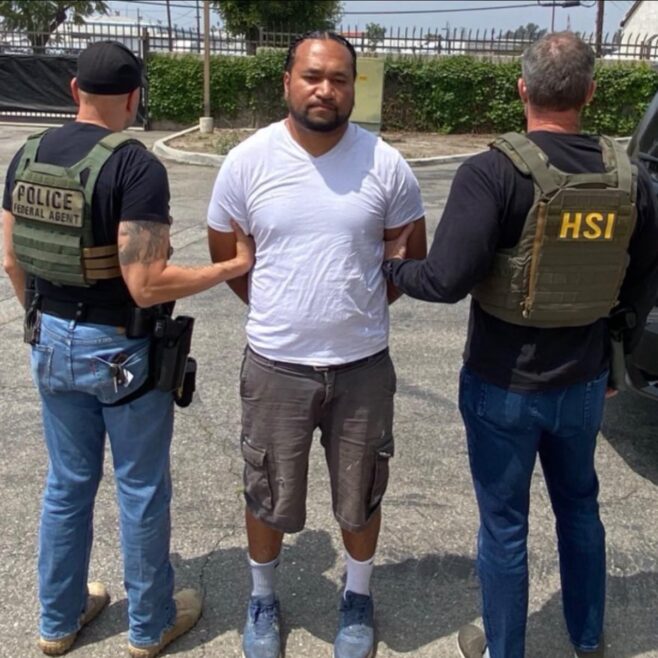By Alessandro Di Bussolo, Vatican News
The white smoke rising from the chimney of the Sistine Chapel is the signal that tells the faithful and the world that a new Bishop of Rome, the successor of Peter, has been elected.
But what happens beneath Michelangelo’s frescoes in the lead-up to those moments? And what occurs before the name of the new Pope is proclaimed from the Loggia of Blessings by the French Cardinal Protodeacon Dominique Mamberti?
The Rite of Acceptance
According to the rules laid out in the Ordo Rituum Conclavis and the Apostolic Constitution Universi Dominici Gregis, one of the Cardinals present in the Sistine Chapel has received the required majority, and the election has taken place canonically.
The senior Cardinal by order and age (or, if he is the one elected, the next in line) asks, in Latin and on behalf of the entire College of Electors, for the elected Cardinal’s consent with the words: “Do you accept your canonical election as Supreme Pontiff?” Upon receiving the consent, he then asks: “By what name do you wish to be called?”
The Master of Pontifical Liturgical Celebrations, acting as notary and with two ceremonial officers as witnesses, then draws up a document confirming the elected Pope’s acceptance and the name he has chosen.
Conclusion of the Conclave
The Apostolic Constitution Universi Dominici Gregis states that the conclave ends once the new Pope accepts his election, “unless he decides otherwise.”
At that point, the Substitute for the Secretariat of State, the Secretary for Relations with States, and others who need to discuss immediate matters with the new Pope may enter the Sistine Chapel.
The white smoke and the “Room of Tears”
After the rite of acceptance is completed, all the ballots and other election-related documents are burned, and the resulting white smoke signals to the world that a new Pope has been chosen.
While the faithful in St. Peter’s Square applaud and the world awaits the name of the new Pope, the newly elected Pontiff exits the Sistine Chapel and enters the “Room of Tears.”
There, with the help of the Master of Liturgical Celebrations, he removes the cardinal’s vestment, puts on one of the three prepared papal garments, and spends a few minutes in prayer.”
The first ceremony: Greeting and “Te Deum”
Upon returning to the Sistine Chapel, the newly elected Pope takes his seat on the chair, and a brief ceremony begins, introduced with a greeting from the senior Cardinal of the Order of Bishops.
The senior Cardinal priest then reads a passage from the Gospel, either “You are Peter, and on this rock I will build my Church” or “Feed my sheep.” The Protodeacon then offers a prayer for the newly elected Successor of Peter.
Afterwards, all the Cardinal electors, in order of precedence, come forward to greet the new Pope and pledge their obedience to him. The ceremony concludes with the singing of the Te Deum, led by the newly elected Pope.
The new pope’s prayer in the Pauline Chapel
Cardinal Protodeacon Mamberti then proceeds to the Loggia of Blessings to announce the election and name of the new Pope with the traditional formula: “Annuntio vobis gaudium magnum: Habemus Papam!” (“I announce to you a great joy: We have a Pope!”).
Meanwhile, the new Pope, before proceeding to the Loggia, stops in the Pauline Chapel to pray silently before the Blessed Sacrament.
After this moment of prayer, he steps out onto the Loggia, where he delivers his greeting and imparts his first apostolic blessing, Urbi et Orbi—to the city and to the world.
Leo XIV – Second Pope from the Americas
The first Augustinian Pope, Robert Prevost – now Leo XIV – is the second Roman Pontiff from the Americas after Pope Francis. However, unlike Jorge Mario Bergoglio, the 69-year-old Robert Francis Prevost is from the northern part of the American continent, though he spent many years as a missionary in Peru before being elected head of the Augustinians for two consecutive terms.
First Augustinian Pope
The new Bishop of Rome was born on September 14, 1955, in Chicago, Illinois, to Louis Marius Prevost, of French and Italian descent, and Mildred Martínez, of Spanish descent. He has two brothers, Louis Martín and John Joseph.
He spent his childhood and adolescence with his family and studied first at the Minor Seminary of the Augustinian Fathers and then at Villanova University in Pennsylvania, where in 1977 he earned a Degree in Mathematics and also studied Philosophy.
On September 1 of the same year, he entered the novitiate of the Order of Saint Augustine (O.S.A.) in Saint Louis, in the Province of Our Lady of Good Counsel of Chicago, and made his first profession on September 2, 1978. On August 29, 1981, he made his solemn vows.
He received his theological education at the Catholic Theological Union in Chicago. At the age of 27, he was sent by his superiors to Rome to study Canon Law at the Pontifical University of Saint Thomas Aquinas (Angelicum).
In Rome, he was ordained a priest on June 19, 1982, at the Augustinian College of Saint Monica by Monsignor Jean Jadot, then Pro-President of the Pontifical Council for Non-Christians, now the Dicastery for Interreligious Dialogue.
Prevost obtained his licentiate in 1984; and the following year, while preparing his doctoral thesis, was sent to the Augustinian mission in Chulucanas, Piura, Peru (1985–1986). In 1987, he defended his doctoral thesis on “The Role of the Local Prior in the Order of Saint Augustine” and was appointed vocation director and missions director of the Augustinian Province of “Mother of Good Counsel” in Olympia Fields, Illinois (USA).
Mission in Peru
The following year, he joined the mission in Trujillo, also in Peru, as director of the joint formation project for Augustinian candidates from the vicariates of Chulucanas, Iquitos, and Apurímac.
Over the course of eleven years, he served as prior of the community (1988–1992), formation director (1988–1998), and instructor for professed members (1992–1998), and in the Archdiocese of Trujillo as judicial vicar (1989–1998) and professor of Canon Law, Patristics, and Moral Theology at the Major Seminary “San Carlos y San Marcelo.” At the same time, he was also entrusted with the pastoral care of Our Lady Mother of the Church, later established as the parish of Saint Rita (1988–1999), in a poor suburb of the city, and was parish administrator of Our Lady of Monserrat from 1992 to 1999.
In 1999, he was elected Provincial Prior of the Augustinian Province of “Mother of Good Counsel” in Chicago, and two and a half years later, the Ordinary General Chapter of the Order of Saint Augustine, elected him as Prior General, confirming him in 2007 for a second term.
In October 2013, he returned to his Augustinian Province in Chicago, serving as director of formation at the Saint Augustine Convent, first councilor, and provincial vicar—roles he held until Pope Francis appointed him on November 3, 2014, as Apostolic Administrator of the Peruvian Diocese of Chiclayo, elevating him to the episcopal dignity as Titular Bishop of the Diocese Sufar.
He entered the Diocese on November 7, in the presence of Apostolic Nuncio James Patrick Green, who ordained him Bishop just over a month later, on December 12, the Feast of Our Lady of Guadalupe, in the Cathedral of Saint Mary.
His episcopal motto is “In Illo uno unum”—words pronounced by Saint Augustine in a sermon on Psalm 127 to explain that “although we Christians are many, in the one Christ we are one.”
Bishop of Chiclayo, Peru, from 2015 to 2023
On September 26, 2015, he was appointed Bishop of Chiclayo by Pope Francis. In March 2018, he was elected second vice-president of the Peruvian Episcopal Conference, where he also served as a member of the Economic Council and as president of the Commission for Culture and Education.
In 2019, Pope Francis appointed him a member of the Congregation for the Clergy (July 13, 2019), and in 2020, a member of the Congregation for Bishops (November 21). Meanwhile, on April 15, 2020, he was also appointed Apostolic Administrator of the Peruvian Diocese of Callao.
Prefect of the Dicastery for Bishops
On January 30, 2023, the Pope called him to Rome as Prefect of the Dicastery for Bishops and President of the Pontifical Commission for Latin America, promoting him to the rank of Archbishop.
Created Cardinal in 2024
Pope Francis created Prevost Cardinal in the Consistory of September 30 of that year and assigned him the Diaconate of Saint Monica. He officially took possession of his Titular church on January 28, 2024.
As head of the Dicastery, he participated in the Pope’s most recent Apostolic Journeys and in both the first and second sessions of the 16th Ordinary General Assembly of the Synod of Bishops on synodality, held in Rome from October 4 to 29, 2023, and from October 2 to 27, 2024, respectively.
Meanwhile, on October 4, 2023, Pope Francis appointed him as a member of the Dicasteries for Evangelization (Section for First Evangelization and New Particular Churches), for the Doctrine of the Faith, for the Eastern Churches, for the Clergy, for Institutes of Consecrated Life and Societies of Apostolic Life, for Culture and Education, for Legislative Texts, and of the Pontifical Commission for the Vatican City State.
Finally, on February 6 of this year, the Argentine Pope promoted him to the Order of Bishops, granting him the title of the Suburbicarian Church of Albano.
Three days later, on February 9, he celebratesd the Mass presided over by Pope Francis in St. Peter’s Square for the Jubilee of the Armed Forces, the second major event of the Holy Year of Hope.
During the most recent hospitalization of his predecessor at the “Gemelli” hospital Prevost presided over the Rosary for Pope Francis’s health in Saint Peter’s Square on March 3.






